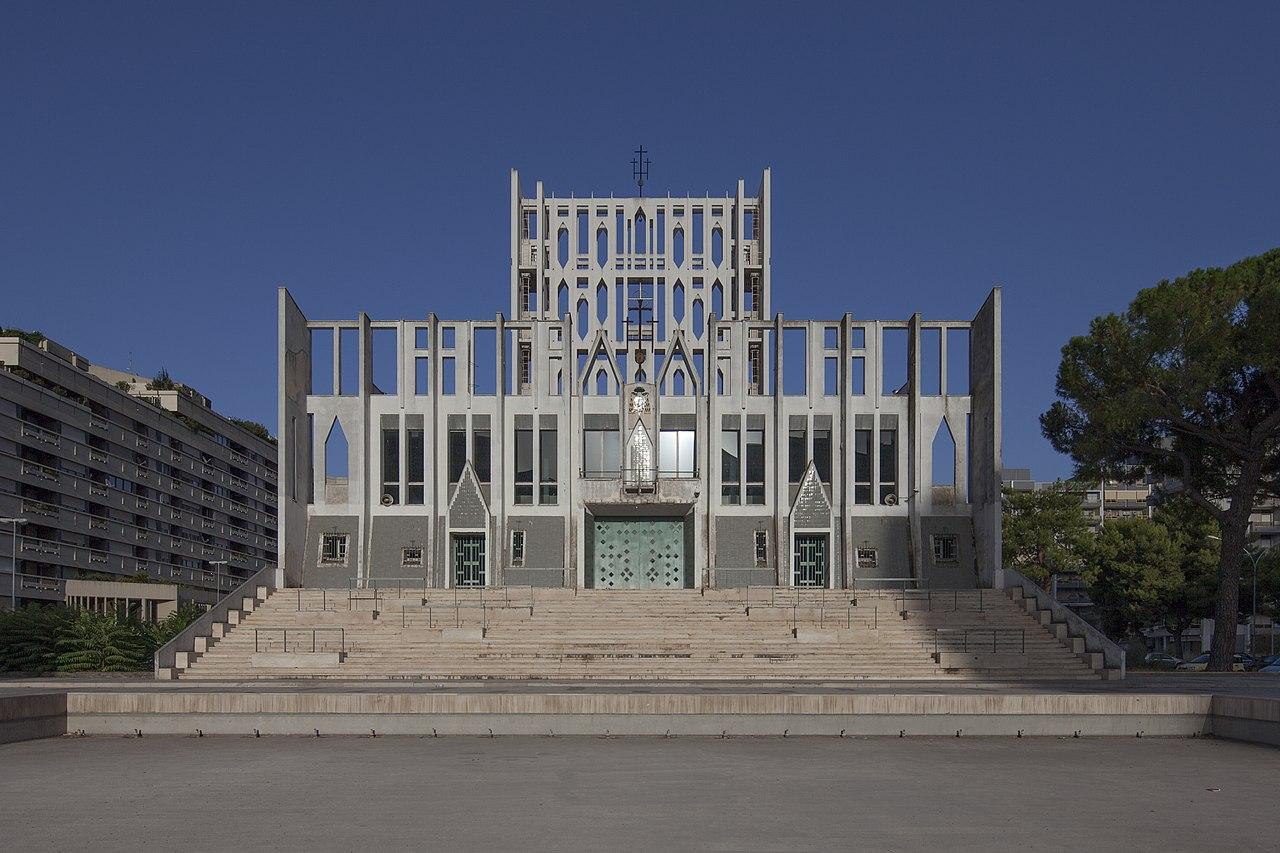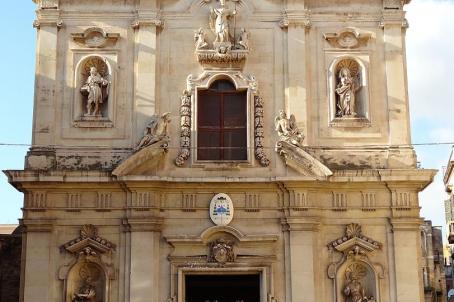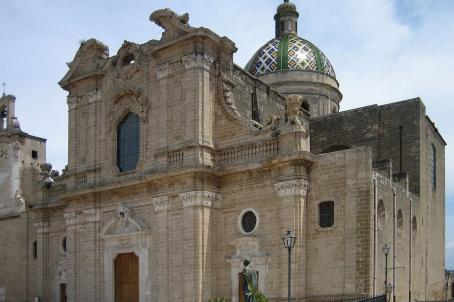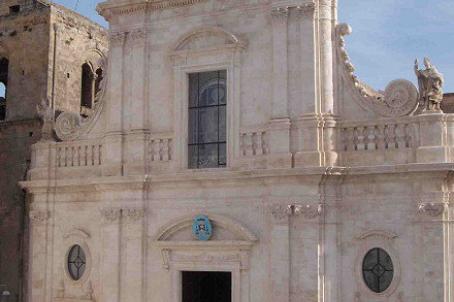Concattedrale Gran Madre di Dio, Taranto

Concattedrale Gran Madre di Dio was built between 1967 and 1970 following the design of the architect Gio Ponti. The structure refers to the maritime tradition of the city, representing a "sail" that is reflected in the water of the three pools in front of the entrance, symbolizing the sea.





